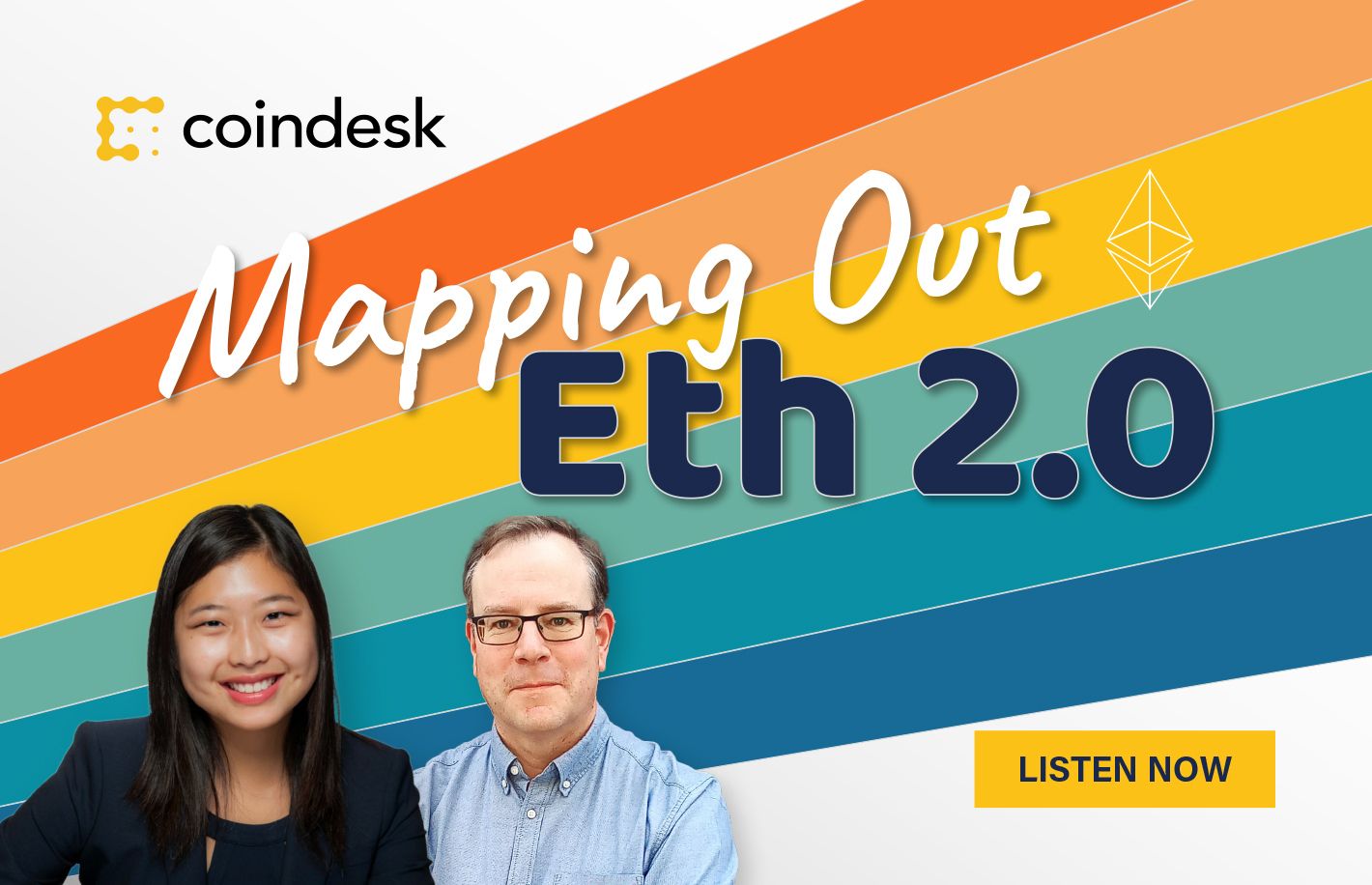In this week’s episode, CoinDesk’s Christine Kim and Consensys’ Ben Edgington discuss why the term “validator” is a misnomer on Ethereum 2.0 and the different ways decentralization can be measured on a proof-of-stake (PoS) blockchain.
This episode is sponsored by PumaPay.io.
The community behind the PoS network, Avalanche, attacked Kim on Twitter for her use of the term “validator” when describing the growth of the Eth 2.0 network.
“The kind of comments I was getting was, 'Christine, you’re misleading and intentionally misrepresenting the growth of the Ethereum network. You don’t know what you’re doing,'” said Kim. “And to that I obviously got very riled and said, ‘No, I’m not using this term wrong.’”
In the context of Ethereum 2.0, validators affirm the validity of blocks and transaction data on the network in exchange for earning rewards in the form of interest on a minimum locked deposit of 32 ether. Their growth is directly correlated to the amount of total stake on Eth 2.0 but not with the number of machines or computers, also called “nodes,” running Eth 2.0 client software. This is because a single node can run multiple Eth 2.0 validators concurrently.
In comparison, a validator on other PoS blockchains such as Avalanche is equivalent to a single node. On these blockchains, having more validators indicates increasing levels of network decentralization and resiliency against single points of failure.
“Having 10 Beacon nodes with one validator each is 10 times more resilient than having one beacon node with 10 validators. So from that point of view, it’s better to have one [validator] per node,” Edgington said. “But what if your 10 nodes are all hosted on [Amazon Web Services] and AWS goes down? It’s the same, right? So, in a sense, you don't really learn much by that comparison.”
In Edington’s view, nodes like Eth 2.0 validators can still be “politically centralized” and controlled by a single user or entity, which is why a blockchain that is architecturally decentralized by the number of nodes may not be politically or logically decentralized.
The term “validator” on Eth 2.0 can still be misleading for other reasons, the primary of which is that Eth 2.0 validators don’t really validate anything. Beacon chain nodes ensure block validity while the role of validators is to attest and affirm the finality of these blocks.
Listen to the full conversation between Kim and Edgington on this week’s Mapping Out Eth 2.0 episode where they discuss the role and function of validators on Eth 2.0, as well as the impact of El Salvador’s announcement about bitcoin as legal tender in the country.
Links mentioned in this podcast:
- The Meaning of Decentralization by Vitalik Buterin (https://medium.com/@VitalikButerin/the-meaning-of-decentralization-a0c92b76a274)
- El Salvador’s Legislature Votes to Adopt Bitcoin as Legal Tender (/markets/2021/06/09/its-official-el-salvadors-legislature-votes-to-adopt-bitcoin-as-legal-tender/)













